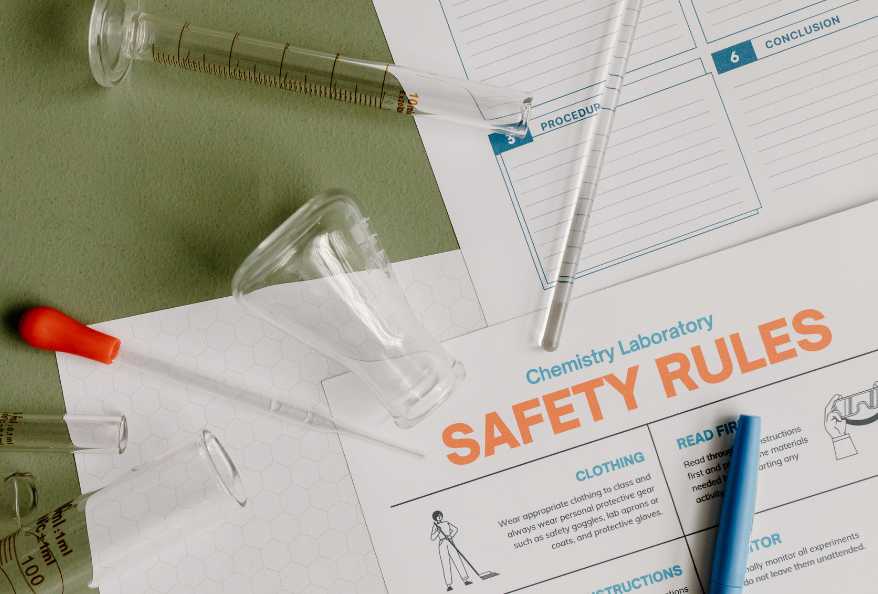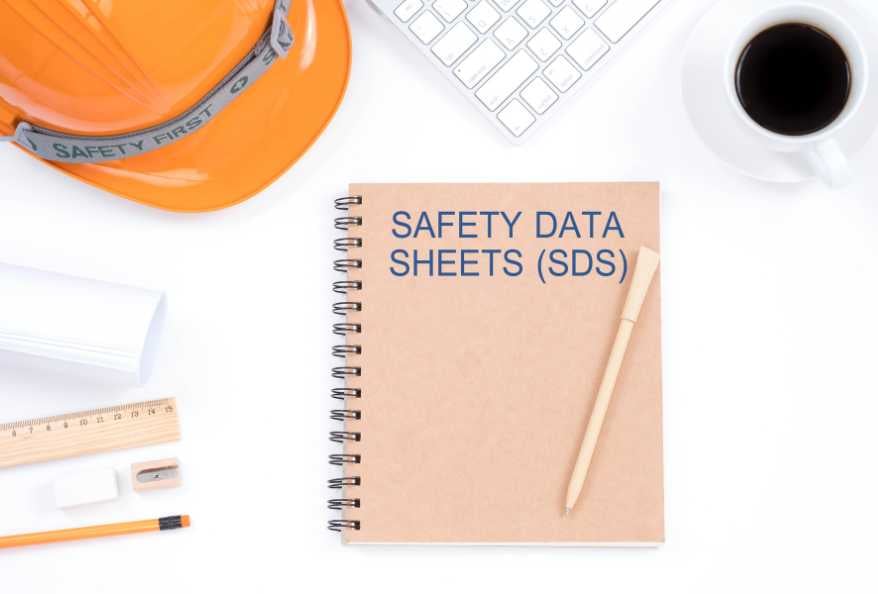How Manufacturers Ensure the Accuracy of Safety Data Sheets (SDSs)
Estimated reading time: 5 minutes
Every chemical product comes with a Safety Data Sheet. It explains what the substance is, how it should be handled, and what to do if something goes wrong.
For manufacturers, creating accurate SDSs is important work. Each SDS must reflect the product exactly as it exists. It also has to be up-to-date and easy to read because people rely on it to stay safe.
This article explores how manufacturers ensure every SDS is accurate, compliant, and reliable.
Step-by-Step Process Manufacturers Use to Ensure SDS Accuracy
Step 1: Assigning SDS Ownership and Responsibility
The process starts with ownership. A person or a team is assigned to create, review, and maintain SDSs. The designated people are usually part of the regulatory, EHS and/or R&D department.
They define which products need SDSs, where they’ll be used, and which regulations apply. Having clear ownership keeps the process organized and accountable.
Step 2: Collecting and Verifying Chemical Data
Manufacturers collect ingredient information from suppliers, laboratory test results, and internal formulation databases. This raw data forms the backbone of the SDS.
Before anything is written, that data is checked for accuracy. Such as verifying chemical names, CAS numbers, and concentrations. If supplier information is incomplete or inconsistent, the manufacturer compares it with reliable scientific databases or runs confirmatory tests. Only verified, traceable data moves forward in the process.
Also Read: Goldene: Thinnest Sheet of Gold Ever Created!
Step 3: Validating Product Properties Through Laboratory Testing

Manufacturers confirm physical, chemical, and toxicological properties through standardized testing methods. These tests measure characteristics like flammability, vapor pressure, or acute toxicity.
Scientific validation ensures that the SDS reflects how the product behaves in the real world. Any result that doesn’t align with expected data is reviewed by chemists and corrected before publication.
Step 4: Classifying Chemical Hazards
The next step is classification, a stage that calls for a strong understanding of regulations. The manufacturer decides which hazard groups apply under regulatory systems like GHS, OSHA HazCom, or REACH/CLP. Then, they assign the correct signal words, symbols, and standard hazard and precautionary statements.
Step 5: Authoring and Formatting Safety Data Sheets
Once the data and classification are confirmed, the actual SDS is authored.
Traditionally SDSs are authored manually. Authors fill in each of the 16 sections by hand, using printed regulations and supplier documents for reference. This method works but can be slow and prone to mistakes, especially when regulations change or new versions are needed.
Most companies now use SDS authoring software. These tools pull verified data into templates that follow GHS and local regulatory formats. The software ensures that all 16 sections of the SDS are complete and consistent. If information in one section conflicts with another, the tool flags it for correction. This automation saves time and prevents human error, while still allowing expert oversight.
Step 6: Reviewing and Approving SDSs

Before release, the draft SDS goes through technical review. Another author, EHS specialist, or toxicologist checks every section for accuracy and clarity. Internal peer review helps catch errors and ensures the language is clear for the intended audience.
Once approved, the final version is locked.
Most SDS authoring tools include built-in version control and audit trails, recording who made each change and when. This documentation is critical for compliance audits.
Also Read: Introduction to Industrial Chemistry for Beginners.
Step 7: Translating and Localizing SDSs for Global Compliance
For manufacturers operating internationally, SDSs must be localized for different countries and languages. To meet each region’s own version of GHS requirements, companies use approved wording and verified translations.
After translation, a native-language reviewer checks the document to make sure the meaning of hazard and safety statements is accurate. This step ensures that important details are not lost in translation.
Also Read: Speed Advantage of AI Document Review.
Publishing and Distributing SDSs Effectively
When the SDS is finalized, it is distributed to employees, customers, and distributors. Many manufacturers keep their documents in an electronic SDS system so everyone can access the latest version. Older SDSs are archived but kept available for recordkeeping and compliance audits.
This prevents confusion and ensures that anyone handling a product has the most current and correct information at all times.
Monitoring Regulatory Changes and Updating SDSs

Regulations and formulations change over time. Manufacturers monitor both supplier updates and regulatory revisions. They review affected SDSs as soon as updates occur. A documented review schedule (often yearly or biannually) helps ensure no SDS becomes outdated. This ongoing attention keeps safety information accurate and compliant across all products.
Why SDS Accuracy Matters
SDSs are the foundation of chemical safety. Keeping them accurate is an ongoing process built on verified data, clear roles, and regular review. Each SDS must follow current regulations, describe the product correctly, and provide reliable safety information.
Accuracy is also required by law. Regulations such as OSHA’s HazCom, REACH, and the GHS require hazards to be classified and communicated properly. Mistakes can lead to fines, product recalls, or loss of compliance.
More than that, accuracy shows that a manufacturer knows its products and takes safety seriously. A precise SDS demonstrates responsibility and commitment to the people who rely on it.
Additionally, to stay updated with the latest developments in STEM research, visit ENTECH Online. Basically, this is our digital magazine for science, technology, engineering, and mathematics. Further, at ENTECH Online, you’ll find a wealth of information.
Image Source: Canva






